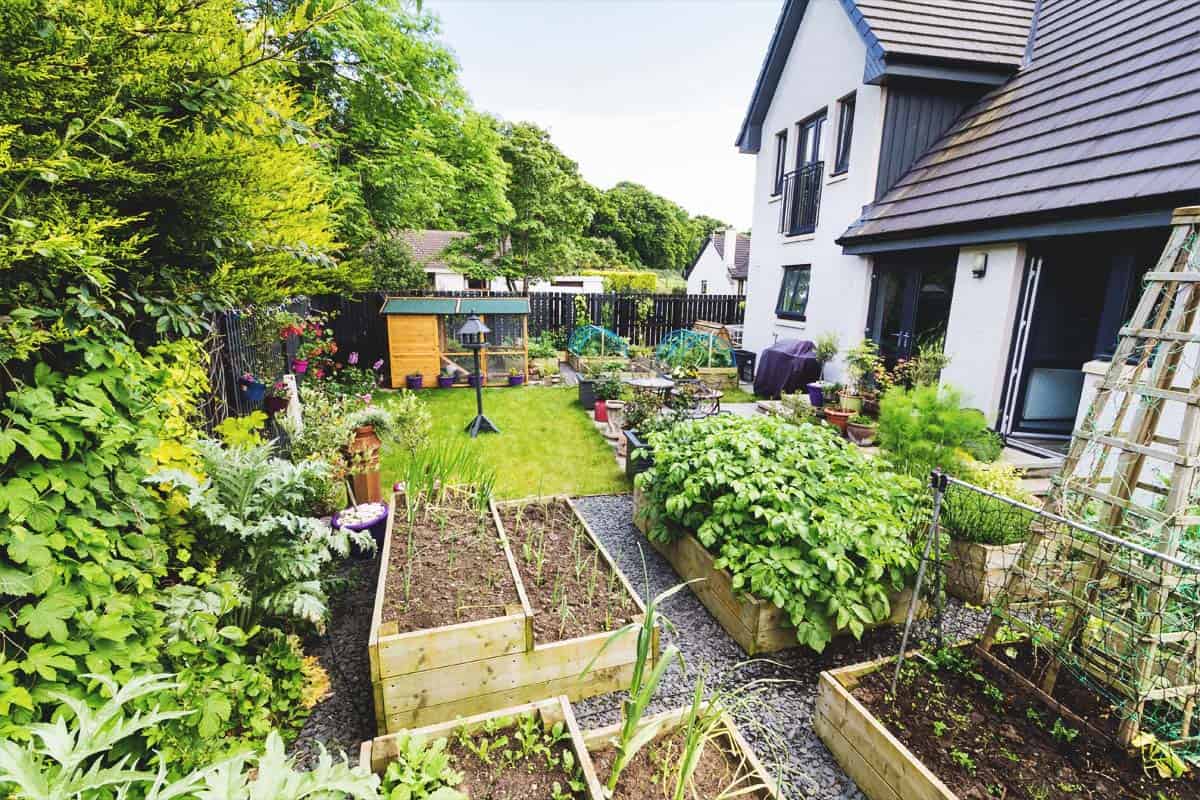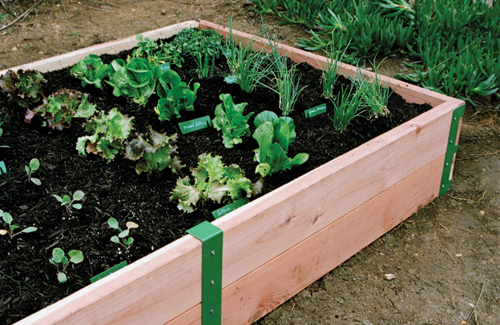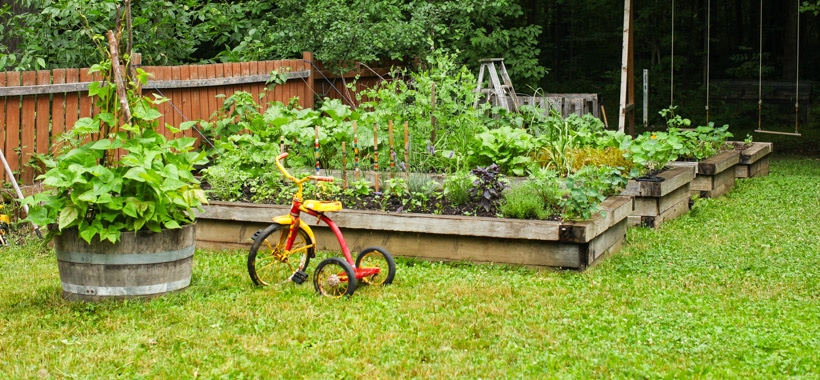Best Plants to Grow for Homestead Gardening Setup
Wiki Article
Reveal the Keys to Producing a Productive and beautiful Horticulture Space
Creating a stunning and productive gardening area is not just a matter of planting veggies and flowers; it calls for a strategic technique that incorporates different important elements. From choosing the right place based on sunlight and soil type to attentively creating your layout and selecting suitable plants, each decision plays a pivotal duty in the success of your garden.Picking the Right Place
Selecting the optimal place for your yard is important to its success and overall aesthetic allure. The initial step in this process entails analyzing sunshine exposure, as many plants require at least 6 hours of direct sunshine daily (Homestead Gardening). A south-facing yard typically obtains the most light, while shaded areas can restrain growth and flowering
In addition, think about soil top quality and drain. Well-draining soil is vital to avoid waterlogged origins, which can lead to plant illness. Conducting a soil examination can give important info relating to pH degrees and nutrient material, allowing you to modify the soil as necessary.
In addition, closeness to water resources is an additional aspect to consider - Homestead Gardening. Having simple accessibility to a tube or irrigation system can streamline the watering procedure and urge consistent plant care. Wind protection is likewise crucial; placing your garden near structures, such as wall surfaces or fencings, can protect it from harsh winds that may harm delicate plants
Lastly, consider ease of access for upkeep and harvesting. A well-placed garden permits hassle-free access, ensuring that you can conveniently often tend to your plants without creating undue anxiety or disruption. Thoughtful location choice lays the foundation for a growing yard.
Choosing Plants Intelligently
When picking plants for your yard, it's important to consider variables such as climate, soil conditions, and individual choices to make sure a productive and harmonious area. A detailed understanding of your local climate will certainly guide you in selecting plants that thrive in your particular atmosphere. Picking drought-resistant ranges is valuable in dry regions, while moisture-loving varieties might be extra appropriate for locations with high rains.Dirt conditions are equally critical; carrying out a dirt examination can reveal pH degrees and vitamins and mineral web content, enabling you to choose plants that will certainly flourish. Indigenous plants are frequently a superb option, as they are generally well-adapted to regional soil kinds and call for less upkeep.
In addition, consider your gardening goals. Are you going for a decorative display, a vegetable garden, or perhaps a mix of both? This will certainly affect your options considerably. Lastly, reflect on your personal choices-- choosing plants that resonate with your aesthetic preferences will improve your satisfaction and commitment to maintaining your garden. By very carefully assessing these factors, you can develop a varied and growing plant option that raises your gardening experience.
Creating Your Garden Layout
With a thoughtfully picked plant choice in hand, the next action is to produce a yard design that makes the most of both elegance and performance. Begin by evaluating the available space, taking into consideration factors such as color, sunshine, and wind patterns. A well-planned layout ought to integrate numerous zones, consisting of areas for planting, paths, and possibly seating.Start with larger plants or focal factors, such as trees or tall perennials, positioned strategically to develop aesthetic rate of interest. Layer smaller sized plants ahead to improve depth and texture. Consider the development practices of your selected plants; taller selections should be positioned at the back or facility of beds, while much shorter ones can line the sides.
Integrating paths not only promotes accessibility for upkeep but additionally invites exploration. Use materials that match the yard's overall visual, whether timber, rock, or gravel chips.
Additionally, believe about seasonal changes and how your format will look throughout the year. Incorporating evergreens alongside seasonal blossoms can ensure year-round elegance. Ultimately, a properly designed yard layout integrates the natural charm of plants with functional considerations, causing an area that is both inviting and productive.
Enhancing Soil Wellness

To improve dirt health, start by carrying out a dirt examination to assess pH levels, nutrition content, and dirt structure. Incorporate natural matter such as garden compost, well-rotted manure, or fallen leave mold and mildew to boost dirt structure, water retention, and microbial task.
Mulching is another efficient technique; it not only saves moisture yet additionally reduces weeds and gradually improves the dirt as it damages down. Preventing too much tillage is vital, as it can interrupt soil structure and injury advantageous organisms. Instead, adopt no-till or minimal husbandry methods to preserve dirt integrity.

Preserving Your Garden Effectively
A properly maintained garden provides satisfaction and productivity, calling for consistent interest to make sure that plants prosper and the landscape remains inviting. Reliable yard maintenance involves a number of essential practices that enhance the health of your plants and the general visual of your space.Routine watering is essential; however, it is necessary to tailor your watering routine based on the particular demands of your plants and local climate conditions. Mulching can assist preserve dampness, suppress weeds, and regulate dirt temperature level. In addition, prompt weeding avoids competition for sources and nutrients, making sure that your plants prosper.
Pruning is one more essential task. It urges healthy growth, eliminates dead or infected branches, and shapes plants to preserve an enticing framework. Additionally, checking for insects and conditions is important; early detection and intervention can save your plants from significant damage.
Fertilization ought to be carried out thoughtfully, using natural choices whenever feasible to advertise lasting dirt health and wellness. Seasonal tasks such as planting, separating perennials, and preparing for winter will certainly guarantee your garden continues to be dynamic year-round. By adhering to these techniques faithfully, you can cultivate a yard that is both beautiful and efficient.
Verdict
Finally, the creation of a attractive and productive horticulture room requires cautious factor to consider of several crucial elements. Selecting an ideal location with sufficient sunshine, picking suitable dig this plants, designing an aesthetically pleasing design, enhancing dirt health, and making certain regular maintenance are necessary elements. By incorporating these techniques, one can grow a growing garden that not just improves the landscape but also promotes eco-friendly equilibrium and sustainability. Such a technique inevitably results in a fulfilling horticulture experience.From selecting the right area based on sunlight and soil type to thoughtfully making your format and picking ideal plants, each choice plays a pivotal duty in the success of your garden. Well-draining dirt is crucial to prevent waterlogged origins, which can lead to plant conditions.When choosing plants for your garden, it's essential to think about factors such as environment, soil conditions, and individual preferences to make sure a harmonious and efficient area. Inevitably, a properly designed yard layout see this page integrates the all-natural charm of plants with sensible factors to consider, resulting in a space that is both welcoming and efficient.

Report this wiki page